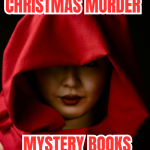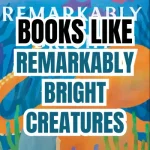I still remember the first time I heard someone talk about “the Gospels.” I was sitting in a coffee shop, eavesdropping on a group of students who were clearly prepping for some theology exam. They kept repeating, “Matthew, Mark, Luke, and John, the four Gospels.” At that moment, I realized I didn’t actually know what that meant.
Were these just four random books? Why were they singled out? And why do people treat them as such a big deal?That little moment kicked off my curiosity. So, if you’ve ever wondered what books are considered the Gospels (and why they matter), this article is for you.
First Things First: What Are the Gospels?
The word “Gospel” literally means “good news.” In Christian tradition, the Gospels are the books that tell the story of Jesus’ life, teachings, death, and resurrection.
The four canonical Gospels included in the New Testament are:
- The Gospel of Matthew
- The Gospel of Mark
- The Gospel of Luke
- The Gospel of John
These aren’t just biographies, they’re written with a purpose: to share the message of Jesus and inspire faith.
A Quick Snapshot of Each Gospel
Here’s a bite-sized look at what makes each of these books unique:
- Matthew: Written with a Jewish audience in mind, it emphasizes how Jesus fulfills Old Testament prophecies.
- Mark: The shortest Gospel, fast-paced, and action-driven, it’s almost like a highlight reel of Jesus’ ministry.
- Luke: Focuses on compassion, inclusion, and stories of the marginalized. It also has the famous parables like the Good Samaritan.
- John: The most poetic and theological, diving deeper into the identity of Jesus as the Son of God.
Wait, Are These the Only Gospels Out There?
This is where it gets interesting.
While Matthew, Mark, Luke, and John are the official (canonical) Gospels recognized by most Christian traditions, there are also other ancient writings often called “apocryphal” or “non-canonical gospels.”
Some examples include:
- The Gospel of Thomas – a collection of sayings attributed to Jesus.
- The Gospel of Mary (Magdalene) – highlights Mary’s role and perspective.
- The Gospel of Judas – portrays Judas Iscariot in a very different light.
These texts didn’t make it into the official Bible, often because early church leaders didn’t consider them historically reliable or aligned with core teachings.
Why These Four and Not the Others?
This was my own biggest question: why these specific four?
The answer: The early Christian community tested writings based on a few key criteria:
- Apostolic connection: Was it linked to someone close to Jesus?
- Consistency: Did it align with the core Christian message?
- Widespread use: Was it already being used across Christian communities?
Over time, Matthew, Mark, Luke, and John stood the test and became the “official” Gospels.
Why It Matters (Even If You’re Not Religious)
Even if you’re not reading the Bible every day, knowing what books are considered the Gospels gives you a better grasp of history, literature, and culture.
Think about it: countless artworks, films, speeches, and even everyday sayings are influenced by these texts. Ever heard “the Good Samaritan”? That’s straight from the Gospel of Luke.
My Final Thoughts
For me, learning about the Gospels wasn’t just about religion, it was about context. Understanding that Matthew, Mark, Luke, and John are the core Gospels, while other writings exist but didn’t make the official cut, helped me see how deeply they’ve shaped not just faith, but culture itself.
If you’re curious, even just reading one Gospel (Mark is a good starter, it’s short and punchy) can open up a whole new way of understanding the roots of Western thought and storytelling.
Know Your Author
Hi, I’m Emon
I’m the voice and heart behind Whimsy Read. After nine years in the world of banking, I followed my passion for storytelling into the world of SEO and content strategy. Now, I blend that analytical eye with a deep love for literature to bring you book reviews that are thoughtful, honest, and always focused on the stories that stay with you.
When I’m not reading or writing, you’ll find me enjoying joyful chaos with my wife and three kids, getting lost in a new series, or revisiting my old loves: theater, music, and gaming. At the end of the day, I believe great books are meant to be shared, and I’m so glad you’re here to share them with me.







Leave a Reply